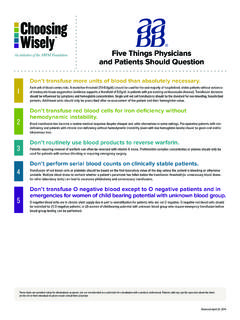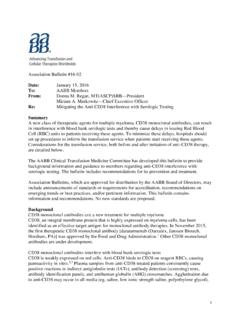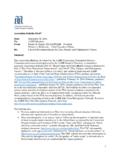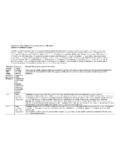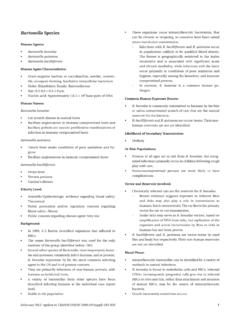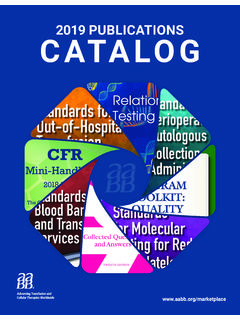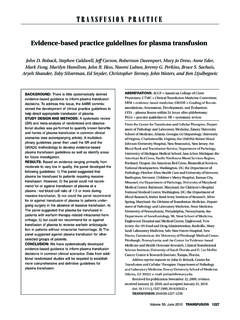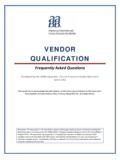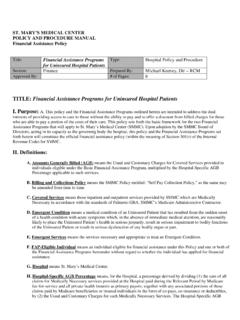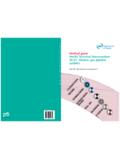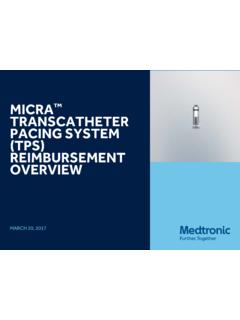Transcription of Billing Guide FINAL - AABB
1 October 2007 1 October 2007 2 Copyright by the American Association of Blood Banks. All rights reserved. This Guide is intended solely for use as a tool to help hospital and physician Billing staff in resolving reimbursement issues. Any determination about whether and how to seek reimbursement should be made solely by the appropriate members of the hospital or Billing staff in consultation with the physician and in light of the procedure performed on a particular patient and supported by the patient s medical record. Use of codes that result in higher reimbursement than is supported by the patient s medical record is prohibited by law.
2 AABB does not endorse the use of any particular diagnosis or procedure code(s). Also, it is important to note that codes can change. The codes listed in this Guide represent possible coding options. It is always the provider's responsibility to determine and submit appropriate codes, charges, and modifiers for services that were rendered. Since local payers may have their own coding requirements, before filing any claims, providers should verify coding in writing with such payers. The coverage policies referenced and described in this Guide are subject to change or to change in interpretation, and new or superceding policies may be issued at any time.
3 Therefore, readers are advised to confirm coverage policies before acting on the subject matter of this Guide . This Guide is provided without any warranty, express or implied, as to its legal effect, completeness, accuracy, timeliness, or applicability to any individual circumstances. In no event shall AABB, its Coding and Reimbursement Committee, AdvaMed or the AdvaMed sponsors of this Guide be liable for any damages whatsoever arising out of the use of the Guide . October 2007 3 AABB thanks the members of its Coding and Reimbursement Committee for their generous assistance in developing this Guide : William Lockwood, PhD, MD (Chair) Suzanne Butch, MA, MT(ASCP), CQA(ASQ) John Carlsen, MHA James Gajewski, MD, FACP Robert Gleason Kamenna Lee Teresa Lee B.
4 J. Smith October 2007 4 TABLE OF CONTENTS I. II. Overview of Insurer Coverage and Reimbursement of Blood Products and Related III. Blood Costs Versus Blood Processing IV. Reimbursement for Blood Products and Services: Hospital Inpatient V. Reimbursement for Blood Products and Services: Hospital Outpatient VI. Billing for Blood Derivatives, Tissue and Bone ..34 VII. Reimbursement for Blood Products and Services: Physician Offices and VIII. Reimbursement and Coding for Apheresis and HPC and BMT APPENDIX A: Fundamentals of Coding ICD-9-CM, CPT, HCPCS, Revenue Codes, and APPENDIX B: The Medicare Blood Deductible APPENDIX C: Documenting the Blood Use and The Blood Deductible Using Value APPENDIX D: Other Reimbursement APPENDIX E: Instructions for Appealing Denied APPENDIX F: Glossary of Reimbursement APPENDIX G.
5 National Non-Coverage of Autologous Platelet TABLES AND SAMPLE CLAIMS Table 1 Payment Table 2 ICD-9-CM Procedure Codes Associated with Blood Table 3 Revenue Codes Used to Bill for Blood Processing and Services, Including Table 4 Revenue Codes Used to Bill for Blood Products Carrying a Charge for the Blood Table 5 Revenue Codes for Laboratory Table 6 Revenue Codes for Laboratory Pathological UB-04 Claim for Inpatient Services when Hospitals Charge for Blood Processing Only ..18 UB-04 Claim for Inpatient Services when Hospitals Charge for the Blood Itself ..19 October 2007 5 TABLES AND SAMPLE CLAIMS (Continued) Table 7 Current CPT Procedure Codes for Blood Table 8 Current CPT Procedure Codes for Common Blood-Related Table 9 Level II HCPCS Code Summary of Commonly Used Table 10 Current HCPCS Codes for Billing Blood and Blood Table 11 Current HCPCS Codes for Billing UB-04 Claim for Outpatient Services when Hospitals Charge for Blood Processing UB-04 Claim for Outpatient Services when Hospitals Charge for Blood Table 12 CPT and HCPCS Codes for Billing Blood Derivatives.
6 34 Table 13 ICD-9-CM Diagnosis Codes for Billing Blood Table 14 ICD-9-CM Procedure Codes ..37 Table 15 Revenue Codes for Billing Bone and Table 16 CPT Codes Available for Allogeneic/Xenogeneic Skin Grafts ..39 Table 17 Current Revenue Code for Billing Corneas ..40 Table 18 Relative Value Unit for Bone Marrow Transplant Table 19 Apheresis Codes ..46 Table 20 APCs for Table 21 Revenue Codes Commonly used with Apheresis Table 22 Stem Cell Collection Codes ..48 Table 23 Cell Processing Codes ..49 Table 24 Description of Coding Table 25 Appropriate Coding Systems for Claim Table 26 Value Codes Associated with the Use of Blood When Blood Itself Carries a October 2007 6 I.
7 INTRODUCTION AABB has published this Billing Guide to assist hospitals, clinicians, and Billing and coding professionals involved with the utilization and subsequent Billing of the services and procedures associated with the use of blood and blood products as well as cellular therapies. This Guide should help answer coverage, coding, and reimbursement questions about blood and blood products and cellular therapies. It was produced with the support of a group of manufacturer members of the Advanced Medical Technology Association (AdvaMed) that manufacture a broad range of blood safety, testing, collection, and transfusion technologies.
8 Blood and blood products comprise a vital resource in modern health care, and are integral to a broad range of urgent care procedures as well as palliative and therapeutic interventions that save and enhance patients lives. However, ensuring the safety and quality of blood products is a formidable task, and blood collectors and providers must continually update their processes to ensure that the blood supply is as safe as possible. In recent years, economic pressures on our health care system have underscored the importance of appropriate third-party payment for blood products and services.
9 National advisory bodies, such as the Advisory Committee on Blood Safety and Availability of the Department of Health and Human Services, have recognized the importance of appropriate reimbursement for blood under the federal Medicare program to ensure patient access to quality health At the same time, Billing practices for blood at some hospitals may not capture the volume or diversity of products and services actually used. The information in this Guide is compiled primarily from Medicare guidelines, for two reasons. First, Medicare is the most significant payer for hospital inpatient blood-related care, covering approximately 57 percent of inpatient admissions with intensive blood Second, Medicare s coverage guidelines and payment policies pave the way for other insurers, including state Medicaid programs and private payers.
10 The publishers of this Guide provide specific instructions to support the most accurate Billing for each beneficiary recipient of blood products or related services. As a larger number of hospitals address this issue, it is the hope of AABB that improved accuracy in Medicare records on the total transfusion services provided and their costs will, in turn, help to make the available payments to hospitals for these services more appropriate. This Guide is intended to help hospitals bill accurately and completely for blood products and services. Though AABB does not provide any guarantees of reimbursement, the intent of this publication is to assist hospitals in understanding the Billing rules and procedures that apply for Medicare and other 1 DHHS Advisory Committee on Blood Safety and Availability, unanimous resolution on Medicare Outpatient Prospective Payment System (OPPS) payment, September 5, 2002.
